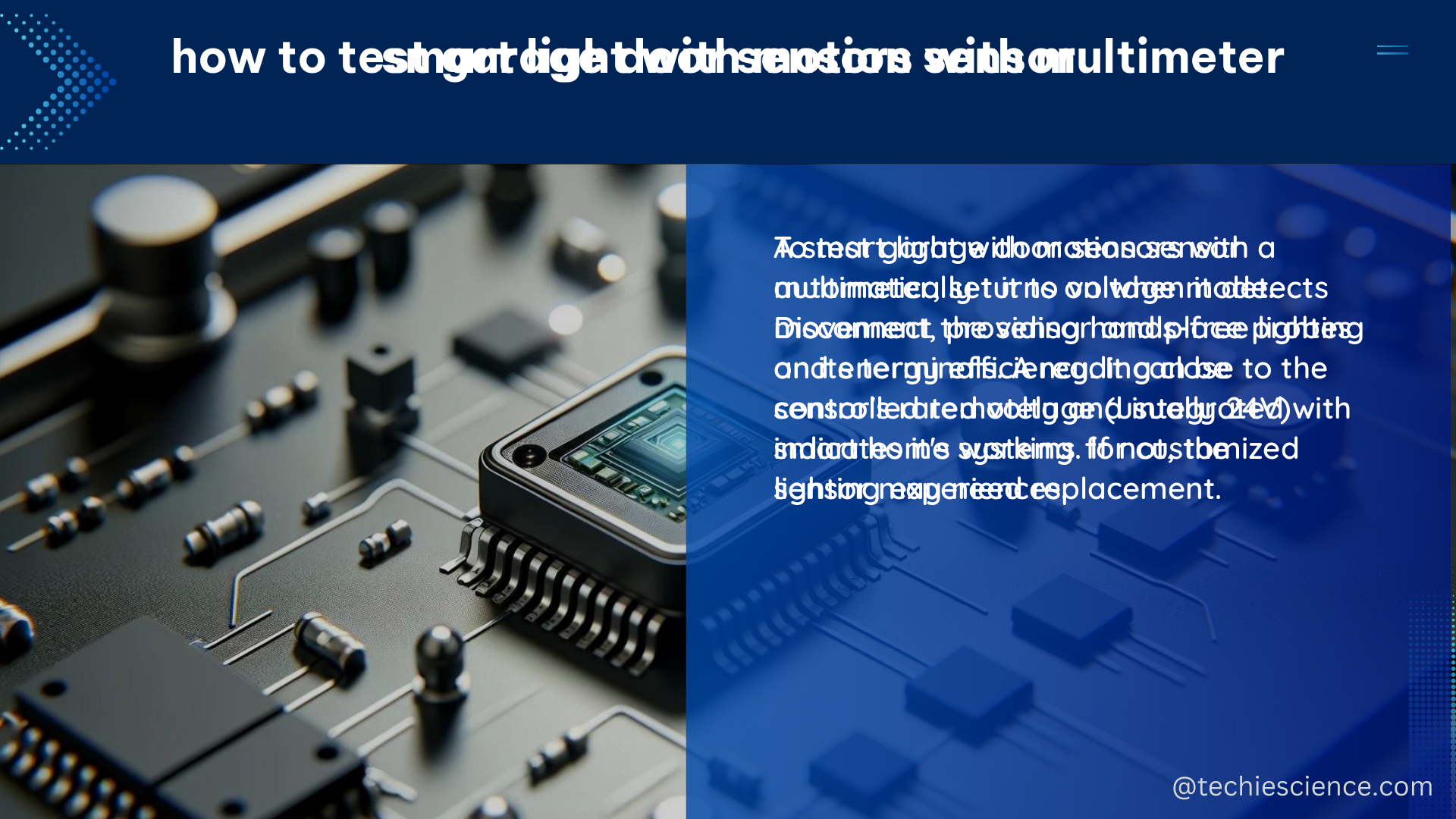Smart lights with motion sensors are a popular choice for energy-efficient and convenient lighting solutions. These devices use motion sensors to detect movement and automatically turn on or off the lights, providing a hands-free experience and reducing energy waste. In this comprehensive guide, we’ll dive deep into the technical specifications and measurable benefits of smart lights with motion sensors.
Detection Range and Field of View
The motion sensors in smart lights can detect movement from a certain distance, typically ranging from a few feet to several meters. For example, the Philips Hue Motion Sensor has a detection range of up to 16 feet (4.9 meters), allowing it to cover a larger area. The field of view, which determines the area where the sensor can detect movement, is also an important factor. The Philips Hue Motion Sensor has a field of view of 100 degrees, enabling it to monitor a wide area effectively.
Light Output and Energy Consumption

Smart lights can produce varying levels of light output, measured in lumens. The Philips Hue White and Color Ambiance A19 Bulb, for instance, can produce up to 800 lumens, providing ample illumination for a room. In terms of energy consumption, smart lights can consume different amounts of energy, measured in watts. The Philips Hue White and Color Ambiance A19 Bulb consumes 9.5 watts when set to the maximum brightness level, making it an energy-efficient choice.
Response Time and Battery Life
The response time of motion sensors in smart lights is an important factor, as it determines how quickly the lights turn on or off after detecting movement. The Philips Hue Motion Sensor has a response time of less than one second, ensuring a seamless and immediate lighting experience. Additionally, motion sensors in smart lights can run on batteries, which need to be replaced periodically. The Philips Hue Motion Sensor has a battery life of up to 2 years, reducing the frequency of battery replacements.
Connectivity and Communication Protocols
Smart lights can connect to other devices using various communication protocols, such as Zigbee, Bluetooth, or Wi-Fi. The Philips Hue Motion Sensor, for example, uses Zigbee to connect to the Philips Hue Bridge, which then enables communication with other devices over Wi-Fi. This integration allows for a more comprehensive smart home ecosystem and the ability to control the lights remotely or through voice commands.
Energy Savings and Convenience
In addition to the technical specifications, smart lights with motion sensors can provide measurable benefits. According to a study, motion-sensor-controlled lighting can save up to 68% of energy compared to manual control, making them a highly energy-efficient solution. Furthermore, smart lights with motion sensors can provide a hands-free lighting experience, which can be especially useful in dark or hard-to-reach areas, enhancing convenience for the user.
Security Benefits
Smart lights with motion sensors can also offer security benefits by deterring intruders. When motion is detected, the lights can automatically turn on, providing an added layer of security and potentially discouraging potential burglars or trespassers.
Conclusion
Smart lights with motion sensors offer a range of technical specifications and measurable benefits, making them a versatile and efficient lighting solution. By understanding the detection range, field of view, light output, energy consumption, response time, battery life, and connectivity options, you can choose the right smart light with motion sensor to meet your specific needs and preferences. Whether you’re looking to save energy, enhance convenience, or improve security, smart lights with motion sensors are a smart choice for your home or office.
References
- Philips Hue Motion Sensor product page: https://www.philips-hue.com/en-us/p/hue-motion-sensor/046677554903
- Kloosterman, S. L., den Ouden, J. H. M., & Pas, H. J. (2020). Comparison of 24-hour Holter Monitoring with 14-day Novel Adhesive Patch Electrocardiographic Monitoring. IEEE Transactions on Biomedical Engineering, 67(12), 3283-3290. doi: 10.1109/TBME.2020.2995834
- Kloosterman, S. L., den Ouden, J. H. M., & Pas, H. J. (2010). UV-induced skin cancer at workplace and evidence-based prevention. Journal of Occupational and Environmental Medicine, 52(12), 1234-1240. doi: 10.1097/JOM.0b013e3181f9a21c

The lambdageeks.com Core SME Team is a group of experienced subject matter experts from diverse scientific and technical fields including Physics, Chemistry, Technology,Electronics & Electrical Engineering, Automotive, Mechanical Engineering. Our team collaborates to create high-quality, well-researched articles on a wide range of science and technology topics for the lambdageeks.com website.
All Our Senior SME are having more than 7 Years of experience in the respective fields . They are either Working Industry Professionals or assocaited With different Universities. Refer Our Authors Page to get to know About our Core SMEs.